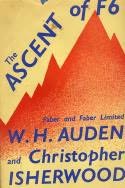 It’s been a busy week for travel and presentations, first in the UK and now in the US. When I was younger, it was hard for me to give public speeches. My mind was on the audience, I was self conscious, I worried that I didn’t have anything worthwhile to say. Clenched muscles, shaking hands, and quavering delivery was the sorry result: my best prop was a podium to clutch.
It’s been a busy week for travel and presentations, first in the UK and now in the US. When I was younger, it was hard for me to give public speeches. My mind was on the audience, I was self conscious, I worried that I didn’t have anything worthwhile to say. Clenched muscles, shaking hands, and quavering delivery was the sorry result: my best prop was a podium to clutch.
Over time, I learned to organize material while teaching community college, and I watched how my directors presented and connected with their audiences. Business school focused on the pitch: how to capture and persuade an audience.
Today, I really look forward to talking with a group. I never get butterflies; I keep a good pace and make better eye contact. I still make mistakes, but (I hope) I’ve also gotten better at learning from them. And a lot of that success depends on the preparation work, the thinking and organizing that distinguishes timid talks from engaging ones.
Broadly, I first think about whether I am lecturing or pitching. A lecture is a journey from common ground to unfamiliar frontiers; I always identify where we start together and what (limited) new knowledge I want to leave them with. In contrast, a pitch builds a more emotional case, still facts and data, but traveling from a shared problem to a consensual solution.
Then I set my subconscious to work. A talk on remote medical monitoring is really about how can a physician keep track of hundreds of patients scattered across a city. I get associated insight everywhere: looking at Facebook, where I am keeping track of dozens of friends scattered across the country, or reading how computers at CERN distinguish significant events from meaningless ones. I scribble it all into a notebook.
I storyboard my notes to define the talk, using big flip-chart pages to collate my notes, then cutting them up to arrange thoughts by progression or affinity. It’s a mess, but reveals the major themes that I want to share.

Time constraints define the structure: A half-hour talk allows about 25 slides. I take a blank sheet and segment out a storyline: 5 slides for the introduction, 6 each for three major topics…the storyboard migrates onto the storyline. In formal lectures, I expand the storyline into an outline of lecture notes.
I simply transcribe these topics into slides to create my first draft,getting thoughts composed clearly and topics into the right order. Each slide forms a paragraph: a logical unit of thought flowing into the narrative ahead and behind.
Once the story is complete, I challenge myself to take a third of the material out, editing, focusing, tightening. There’s often too much background, or excess detail where the point isn’t being made. In the end, I want a strong narrative flow to carry both me and my audience.
 Finally, I fix the visuals, adding illustrations, ensuring that the font and headings are consistent, making the text blocks visually interesting. I like the Fast Fade transitions between slides, but rarely use animations except to introduce sequences of pictures.
Finally, I fix the visuals, adding illustrations, ensuring that the font and headings are consistent, making the text blocks visually interesting. I like the Fast Fade transitions between slides, but rarely use animations except to introduce sequences of pictures.
And a final review by a friend catches any last spelling errors and obscurities.
When my talk arrives, I own the topic. I’m excited about the ideas, the points are clear in my mind, so there’s no need to read from the slides and I can get engaged with the audience..
Disasters still happen: I included some borrowed slides in a talk this week and got lost trying to present them. There was nothing to do but declare a break, rip out all of the offending slides, and then make the top level points without any presentation materials. I kicked myself hard: I know better.
But when the session moderator cut my pitch on the fly yesterday, asking that I skip ahead to a particular topic of interest, I could adapt. I knew my material: nod, Slide 24 please, and we were off without missing a beat. That’s how I like to be able to do it.
Labels: Advice, Business Careers




















 The British playwrights Auden and Isherwood wrote The Ascent of F6 in 1936. It tells the story of Michael Ransom and his team of climbers, sent to remote Ostnia to conquer the fabled peak. Instead, all are killed during the climb by demons that embody each man’s individual weakness.
The British playwrights Auden and Isherwood wrote The Ascent of F6 in 1936. It tells the story of Michael Ransom and his team of climbers, sent to remote Ostnia to conquer the fabled peak. Instead, all are killed during the climb by demons that embody each man’s individual weakness.



